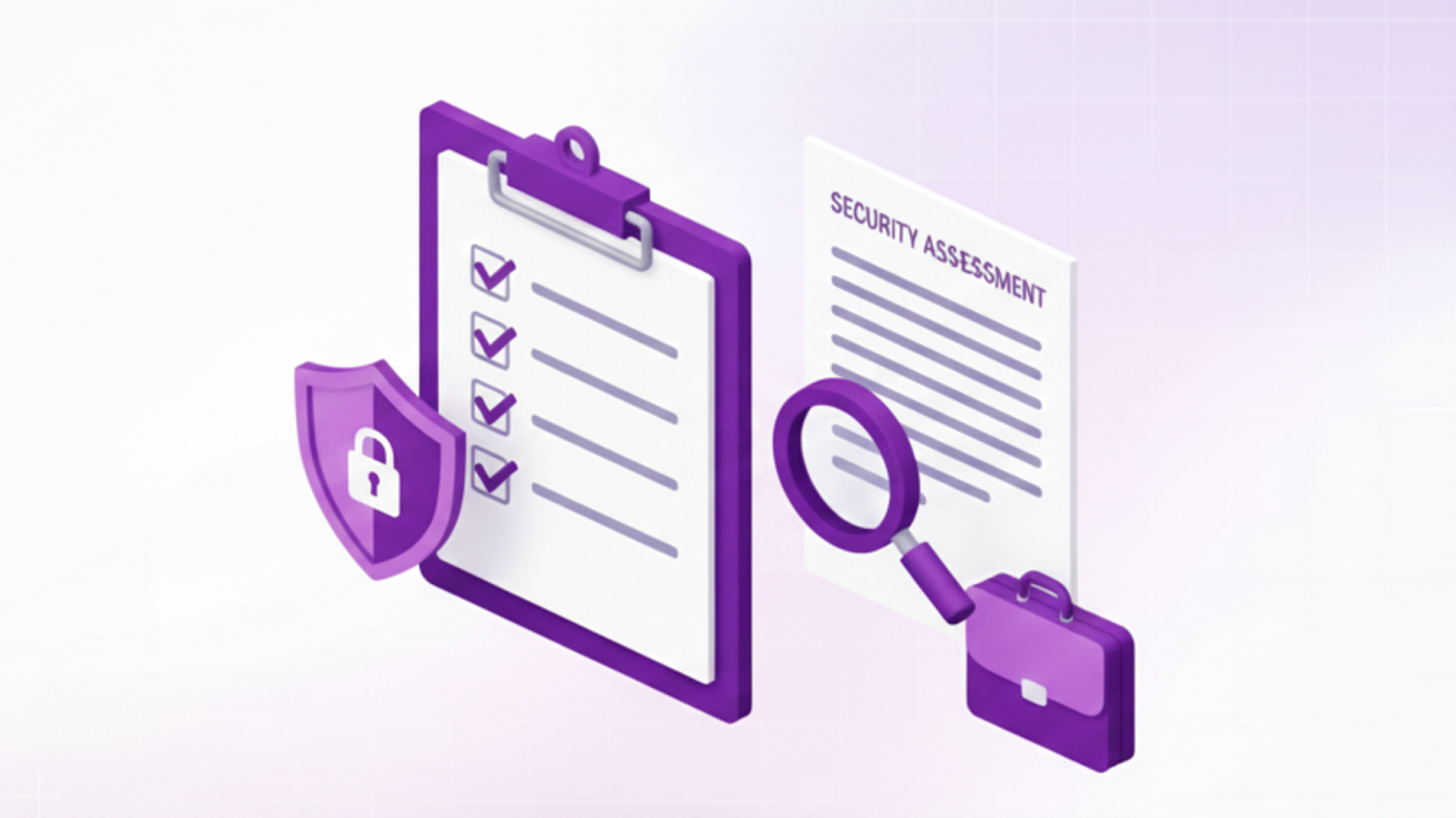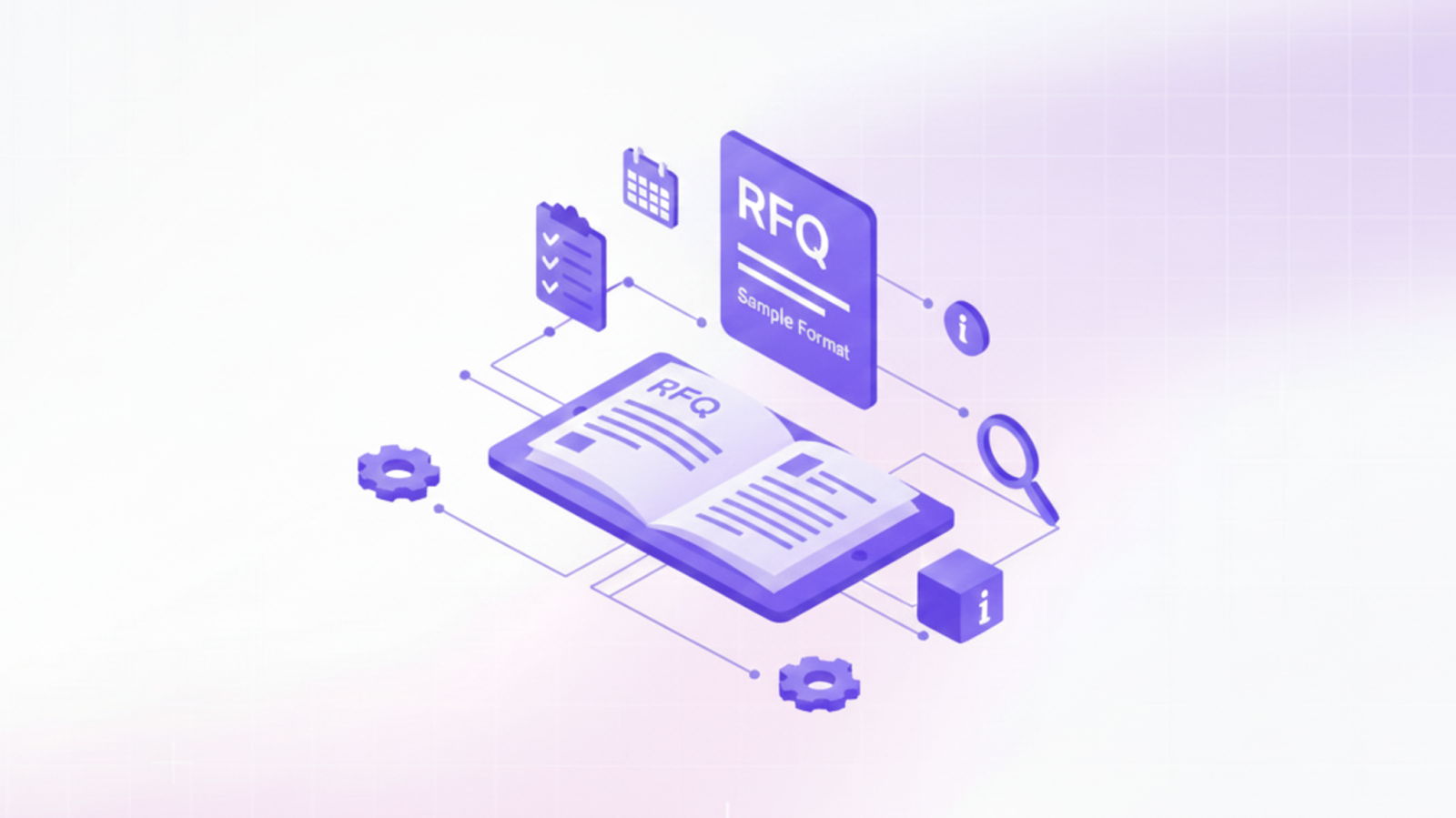When a potential customer reaches out, speed and accuracy make all the difference. Delays or inconsistencies in response can mean lost deals. That’s why well-structured sales documentation is no longer a nice-to-have; it’s the foundation of an efficient, high-performing sales team.
Whether you’re creating a sales process for a growing team or streamlining sales content for enterprise efficiency, the right sales doc at the right moment improves sales performance, boosts team confidence, and builds trust with prospects. Sales documentation turns scattered knowledge into shared clarity.
This guide will walk you through everything you need to know about creating, organizing, and managing sales documents, with a focus on clarity, consistency, and speed. From internal sales documents to customer-facing sales proposals, every piece of documentation should serve a purpose: helping your team sell better.
What is sales documentation?
Sales documentation refers to all the written materials that guide, support, and enhance the sales process. It includes everything from internal sales documents like sales playbooks and competitor battlecards to customer-facing content such as case studies, pricing documents, and sales proposals.
When done right, sales documentation connects your sales strategy to real-world execution. A structured sales doc reduces confusion, enhances sales guidance, and ensures every rep stays aligned with your sales messaging.
Well-documented sales content improves sales workflow, drives sales efficiency, and allows teams to navigate the sales funnel more effectively. Whether you’re developing a sales process for a new market or training reps on objection handling, documentation is your secret weapon.
But the value of documentation doesn’t stop at the sales team. Well-maintained sales documents impact customer acquisition, build stronger buyer relationships, and reinforce credibility during product demos and sales pitches. It becomes the silent partner in every deal your team closes.
Types of sales documents you should be using
Sales documentation comes in various forms. Each type plays a unique role in supporting different stages of your sales process and different personas on your team. Let’s break them down into four core categories that every business, especially those developing a sales process, should pay attention to.
Internal sales documents
Behind every high-performing sales team is a reliable library of internal documentation. These resources provide sales guidance, standardize knowledge, and ensure every team member is equipped to succeed.
- Sales playbook: This is your go-to manual that outlines your overall sales strategy, ideal customer profiles, messaging frameworks, sales pitch templates, and key tactics. It brings clarity to your sales process.
- Objection handling guides: Essential for equipping reps with confident, consistent responses to common pushbacks.
- Sales manual template: Offers structured onboarding materials and operating procedures, ideal for a small business sales process.
- Competitor battlecards: Provide quick insights on how to position your offering against competitors, ensuring sharper differentiation.
- Internal pricing sheets and policy templates: These documents bring alignment across the team when navigating complex negotiations.
Use a standardized sales document template to maintain consistency across these internal tools. Platforms like HubSpot sales documents also provide options for managing these efficiently. Here is a sales strategy template from Gartner that you can implement.
Customer-facing documents
Customer-facing documentation is where your brand meets your buyer. These materials need to be visually appealing, persuasive, and easy to understand.
- Sales proposals: Often the most critical sales doc in your arsenal. Tailor them to show how your solution meets the buyer’s specific needs.
- Case studies: Help prospects envision success by showcasing real customer results. These are invaluable during the middle of the sales funnel.
- Product demos: While often live, good documentation can guide a self-service experience or reinforce the pitch post-demo.
- Pricing documents and sales quotes: Should be clear, detailed, and flexible. A consistent sales template here boosts confidence.
- Customer onboarding guides: Provide a seamless handoff post-sale and reinforce long-term trust.
Templates for sales proposals, pricing breakdowns, and brochures should be part of your free sales templates library to ensure agility.
Make sure each sales doc aligns with buyer expectations. Every customer-facing sales document should feel purposeful and professionally structured using a consistent sales document template.
Sales document templates
Templates save time, maintain quality, and ensure every doc sales effort stays on-brand and on-message. These templates also make it easy for new hires to start creating a sales process without reinventing the wheel.
- Sales template: Can be reused for various customer-facing communications like pitch decks and follow-up emails.
- Template for sales proposals and demos: Gives reps a fast, effective way to respond to buyer interest.
- Free sales templates for quotes and agreements: Allow your team to stay responsive during fast-moving opportunities.
- Sales policy template and sales document template: Help standardize how legal and operational info is presented.
The more templates you develop upfront, the easier it is to maintain sales efficiency over time. Templates should evolve based on feedback and usage patterns. Having a library of free sales templates also helps in developing a sales process that scales efficiently.
Sales process documentation
Sales process documentation outlines how your team executes its sales strategy. These are your operating blueprints, especially vital when creating or developing a sales process from scratch.
- Sales process document: Maps the entire buyer journey and outlines key actions, tools, and metrics.
- Sales and after-sales operating guideline: Aligns pre-sale and post-sale efforts.
- Sales workflow documentation: Details how opportunities move through the pipeline.
- Sales training documents: Used for onboarding and ongoing skills development.
- Sales content management guides: Explain how sales collateral is stored, updated, and accessed.
These materials ensure that whether you’re onboarding new hires or expanding into new markets, your sales process documentation keeps everyone aligned. For smaller teams, a solid sales manual template and documented sales policy template support structured growth in a small business sales process.
Creating effective sales documentation: A 5-step guide
The creation of quality sales documents isn’t about volume. It’s about relevance, consistency, and ease of use. Follow these steps to build a system that supports your entire sales funnel.
1. Identify your team’s needs
Before drafting a single sales document, understand where your team struggles. Are they unclear on messaging? Are they wasting time building pitch decks from scratch? Is objection handling inconsistent? These gaps are where your documentation will provide the most value.
Interview team members, shadow sales calls, and analyze your CRM data. The goal is simple: identify friction points in your sales process and solve them with documentation. Creating a sales process that addresses these friction points will form the foundation for your documentation structure.
2. Choose the right types of sales documents
Not every business needs the same mix of documentation. A small business sales process might focus more on templates and simple playbooks, while enterprise teams need layered documentation tied to sales analytics and customer acquisition workflows.
Categorize your needs into internal sales documents, customer-facing content, and templates. From there, decide what to build or improve first. Consider including a sales manual template and sales policy template as starting points for internal governance.
3. Use sales templates to scale quickly
Templates aren’t just timesavers—they’re force multipliers. A well-designed sales document template ensures that every document your team produces is consistent, professional, and aligned with your brand.
Start by building a free sales templates library: one-click templates for sales proposals, case studies, demo scripts, and onboarding documents. Keep each sales template easy to customize, with placeholders and embedded tips.
Make sure you have a distinct template for sales follow-ups, sales training documents, and competitor battlecards. Over time, your documentation library becomes an on-demand knowledge hub that supports creating a sales process across functions.
4. Assign clear ownership
Sales documentation quickly becomes outdated when no one owns it. Assign a documentation owner—or several—based on function. Sales ops might manage the sales process document, while enablement oversees sales training documents.
Use collaborative tools to enable easy updates and feedback loops. If you use HubSpot sales documents or a similar platform, assign permissions to ensure clarity on who can edit what.
Clear ownership ensures each sales doc, whether an internal guide or a customer-facing proposal, stays up-to-date and aligned with your strategy.
5. Integrate and optimize
Documentation doesn’t live in a vacuum. It should integrate with your sales enablement platform, CRM, and content library. This reduces toggling and brings doc sales efforts closer to real-time sales conversations.
Track usage and feedback. Ask your team which sales documents they use most, and which go untouched. Then optimize accordingly. This step is crucial when developing a sales process that evolves with your business.
Best practices for sales document management
Now that you’ve created your sales documentation, it’s time to manage it like a product. These best practices ensure long-term relevance, scalability, and performance.
Centralize everything
Consolidate all sales documentation into a single searchable location. A cluttered file system or scattered links slows your team down. Use clear folder structures, intuitive naming conventions, and metadata tagging.
Whether it’s sales playbooks, pricing documents, or a sales policy template, reps should find what they need in seconds.
Align with the buyer journey
Sales documents should mirror the buyer’s experience. Map your documents to the stages of your sales funnel, from lead generation to closing to customer success. For example:
- Discovery: sales pitch templates, product overview sheets
- Evaluation: case studies, competitor battlecards, product demos
- Decision: pricing documents, ROI calculators, sales proposals
Each sales document template used at a different stage should reinforce the same sales guidance and value messaging.
Keep content fresh and consistent
Consistency builds trust. Ensure every document, whether internal or customer-facing, uses the same tone, visual style, and messaging framework. A sales messaging guide or brand tone doc can help here.
Review content regularly. Build a cadence (monthly or quarterly) for reviewing and updating all sales document templates, internal sales documents, and customer-facing content.
Train your team on usage
Even the best documentation fails if your team doesn’t know how to use it. Host short training sessions to walk through key documents. Add tooltips or quick guides within each template for sales reps to reference.
For smaller companies, this becomes a central part of developing a sales process through repeatable sales guidance.
Track and analyze performance
Use sales analytics tools to measure the impact of documentation. Which documents are most used? Which correlates with closed deals? Let data shape how you develop and retire templates.
Building a documentation system that drives performance
Sales documentation should evolve as your business grows. Start simple, expand over time, and build feedback loops into your process.
- Begin with the sales process document and top-priority customer-facing documents.
- Add a sales manual template and sales and after-sales operating guidelines to improve consistency.
- Introduce templates for case studies, pricing documents, and sales proposals.
- Build a documentation library with internal sales documents, free sales templates, and platform-integrated sales content.
The end goal isn’t to just check a box; it’s to make sales documentation a competitive advantage. Creating a sales process with these foundations ensures long-term scale and adaptability.
Your next steps: turning documentation into a growth engine
Behind every successful sales strategy is strong documentation. Sales documentation isn’t just a support function; it’s central to creating a sales process that drives consistent performance.
It aligns sales guidance, shortens learning curves, improves customer acquisition, and elevates sales efficiency. And with sales automation, sales content management, and CRM integration, managing your sales doc ecosystem has never been easier.
Evaluate where your documentation stands today. Identify gaps. Use this guide as your roadmap. Start building out your sales document templates. Organize your types of sales documents. Roll out sales training documents. And centralize it all in one place.
Whether you’re a startup building a small business sales process or a mature company optimizing sales enablement, your documentation will be the force behind every win.
So invest in it. Develop it. Share it. And watch your team accelerate—from first call to closed deal, every time.
How SiftHub simplifies sales documentation
SiftHub creates a centralized AI-powered hub that consolidates all your sales materials, RFPs, product specs, case studies, and support articles, eliminating the need to hunt across multiple systems. The platform's AI automatically generates tailored responses by pulling from your existing knowledge base, while maintaining standardized question-answer pairs that ensure consistent, accurate responses across your entire team.
The result is dramatic efficiency gains: teams can "respond 10x faster" to proposals and RFPs, with content automatically personalized to address specific client pain points.
SiftHub works within your existing tools: Slack, Teams, email, and CRM, so you never leave your drafting ecosystem, turning hours of documentation work into minutes while improving quality and consistency. Know more here.










